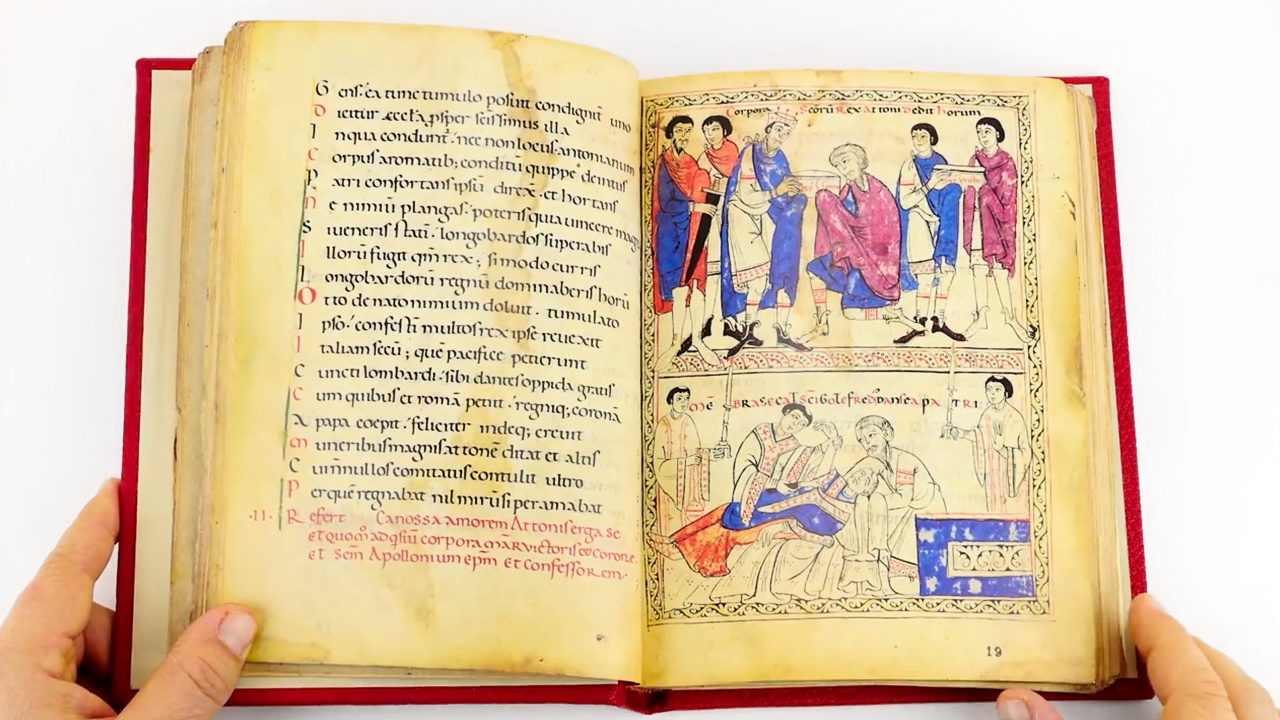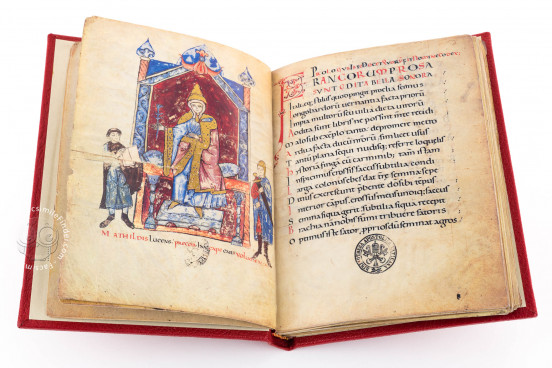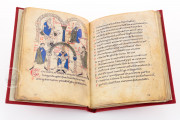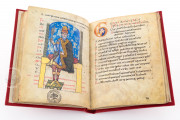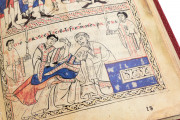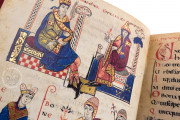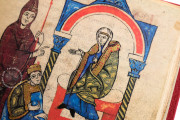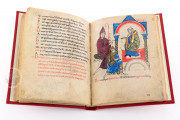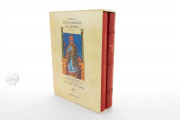Vita Mathildis, translated as the Life of Matilda, also named Acta Comitissae Mathildis is a biography in Latin written by the Benedectine monk Donizo, abbot of the monastery of Saint Apollonius, Canossa. Complied in the years 1110-1115, the biography is a celebratory text recording the life and acts of the Great Countess Matilda of Tuscany.
The life of Matilda of Canossa (1046-1115) became the subject of illuminated manuscripts because of her political power. The Great Countess was able to bring prestige to her dynasty and had a pivotal role in the investiture controversy between the Pope and the empire. In 1077, it was at Matilda's castle that Pope Gregory VII forgave the emperor Henry IV.
By donating possessions to the Church, Matilda strengthened the Papacy, but also helped north Italian cities in their struggle for independence from the empire. Matilda was promoter of the Italian city-state ("comune").
The Manuscript of Donizo's Vita Mathildis in the Vatican Library
Preserved in the Vatican Library, the magnificent manuscript is composed of two sections. The first consists of a dedication, two prologues and twenty chapters recounting the events of the Canossa family, from the forefather Adalbert Atto of Canossa up to the death of Beatrice of Lorraine, mother of Matilda. The second part of the codex continues the narrative describing the Pope Gregory VII and the Emperor Henry IV traveling to Lombardy. Donizo emphasizes Matilda's religious piety.
The biography concludes with a poem on the death of the Great Countess Matilda and Donizo exhorting Matilda to welcome the new emperor Henry V. In chapter twenty, the author signed the work by writing his name, Donizo, in the form of acrostic.
Illuminating the Life of Matilda of Canossa
Written in hexameters, the manuscript is embellished with full-page illuminations revealing political messages. The dedication page (fol. 7v) shows Matilda between her spiritual and secular protectors: her chaplain Donizo, presenting the book, and her sword-bearer. The enthroned Matilda reminds of the iconography of the imperial ruler as found for example in Carolingian and Ottonian miniatures.
Throughout the book, the illuminations provide important visual evidence of Matilda's political position especially as a mediator between Henry IV and the Pope Gregory VII (fol. 49r).
We have 1 facsimile edition of the manuscript "Vita Mathildis": Vita der Mathilde von Canossa facsimile edition, published by Belser Verlag, 1984
Request Info / Price
